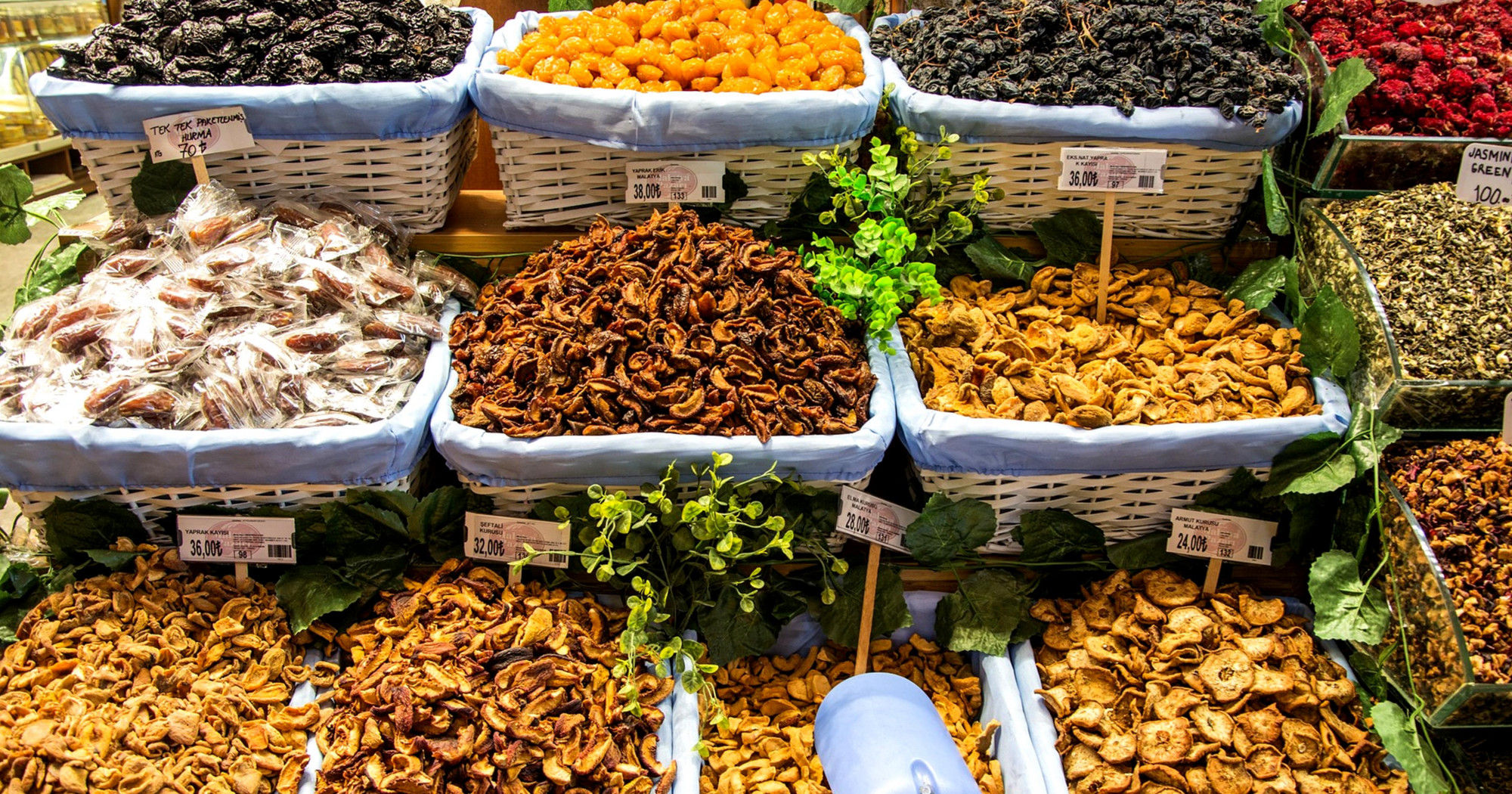Dried fruit

Many of us see dried fruit as a great snack or a cooking ingredient while others avoid it at all cost. So how come opinions are so divided?
To state the obvious, dried fruit has essentially had most of its water content removed through drying, which ensures it lasts much longer than fresh fruit. This has been a common method of food preservation for millennia.
Nutritious snacks
Dried fruit contains most of the nutrients found in fresh fruit, except for lower amounts of some of the more volatile vitamins, such as vitamin C. Any dried fruit is always a good source of fibre, healthy carbohydrates, antioxidants and phytochemicals that help us stay healthy. As far as minerals are concerned, dried fruit tends to be a good source of potassium and copper and some are additionally good sources of iron – apricots, raisins, pears, figs – while figs and apricots can also help top up your calcium intake.
Because dried fruit is a more concentrated form of fresh fruit, it’s generally higher in fruit sugar and that’s a good thing if you need an energy boost or for natural sweetening of cooked dishes. However, certain fruits, such as dates, are extra rich in sugar so if you’re watching your weight, maybe don’t eat an entire bag in one sitting.
Different types
During the drying process, fruit naturally shrinks and darkens. Natural dried fruit has nothing added and is usually quite a dark colour – think raisins, prunes, dates and apricots. To prevent colour loss and make the fruit ‘prettier’, many manufacturers add preservatives such as sulphite, most commonly to orange apricots, pears and mango. Some dried fruit is also candied – infused and coated with sugar – particularly cranberries and exotic fruit such as papaya, kiwi and pineapple.
Natural dried fruit is the best option and if it’s organic, even better. The next best choice would be dried fruit preserved with sulphite (sulphur dioxide, SO2 or E220) – accepted as safe unless you’re sensitive to it. And many people are! Asthma sufferers are particularly likely to react to sulphur dioxide, which can often trigger an attack. In others, it can cause asthma-like symptoms such as wheezing and difficulty in breathing. If you’re affected, the only solution is to avoid sulphur dioxide so always check the ingredients!
When it comes to candied dried fruit, you probably already know the answer – it’s full of sugar so best avoided.
Freeze-dried
Freeze drying removes up to 98 per cent of the water in fruit – more than other drying methods – and because the process is very fast, it also better preserves some nutrients, such as antioxidants. It follows that freeze-dried fruit is very crisp, light and nutritious. It makes a great snack or when you’re travelling and can’t get fresh fruit.
Top tip
Dried fruit certainly has its place in a healthy diet but make sure it’s not replacing fresh fruit in your daily regime.
Special focus: prunes
Prunes are a good source of fibre, potassium, beta-carotene and vitamin K. They also contain boron, a mineral important for bone health, and small amounts of iron.
You may have heard that prunes have a natural laxative effect – it’s true! Not only do they contain fibre but also a special sugar alcohol – sorbitol – which gives them their laxative properties. If you eat only few you might not notice any difference but if you need to ‘go’, grab a small bag of prunes and the result is guaranteed!
Special focus: raisins
Raisins are an excellent natural sweetener for cereal-type breakfasts or baking and can liven up a salad or a couscous dish. They add fibre, potassium and small amounts of iron to meals but if you want to snack on them alone, hold back on the quantity – they are very sweet so you can easily eat too much sugar, particularly if you eat them by the handful.
Special focus: figs
Dried figs are one of the most nutritious foods you can get – providing good amounts of calcium, iron, magnesium, potassium, copper, manganese, fibre, healthy carbohydrates and some protein to boot! Don’t leave them just for Christmas, figs are a supersnack anytime.
Special focus: dates
Dates are delicious and because of their caramel flavour are ideal for a myriad of sweet snacks and dishes. They provide some healthy fibre and several important minerals, such as magnesium and potassium but they are not such a great source of iron as many people claim. They do contain some but are not a particularly rich in it. What they have plenty of is natural sugar, which can be great if you use them to make energy bars but not so great if your lifestyle is not very active. Your choice!
DIY
Fancy making your own dried fruit? It’s easy but can take a while. It always starts with slicing or halving the fruit and spreading the slices in a single layer on a baking sheet or tea towel. If you have a room that’s warm and dry, you can do the traditional air-drying method and just leave the fruit to dry naturally but this is only advisable if the temperature is high enough, and the air dry, otherwise they can decay instead of drying!
In winter, putting the fruit on radiators is a good technique and guarantees great results. Oven drying is also good but can take hours and use lots of energy. Place the fruit on baking sheets on the oven racks, leave the door slightly open and the oven turned on very low (50-70°C) until the fruit is dry enough. If you’d like to make dried fruit regularly, it might be better to get a dehydrator as it’s more reliable than oven drying and uses less energy.




